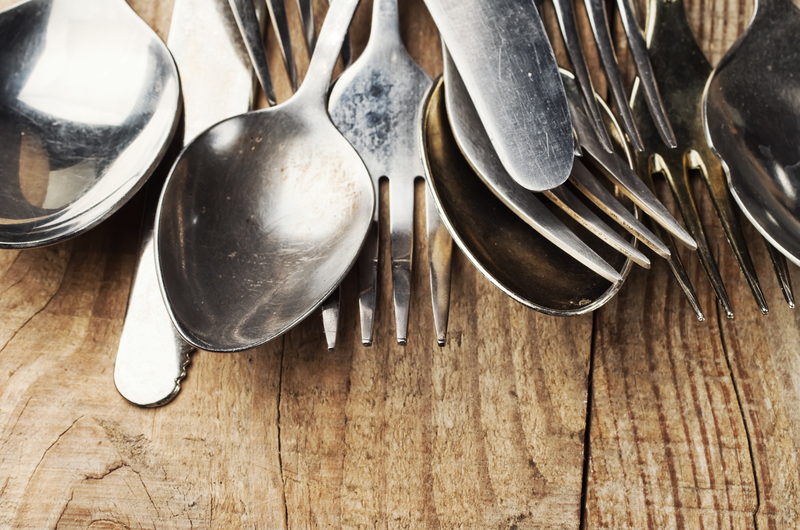Mastering the Art of Carpet and Hard Floor Sanitation
Posted on 26/08/2025
Mastering the Art of Carpet and Hard Floor Sanitation
Maintaining optimal cleanliness and hygiene in your home or business is not just about appearances--it's crucial for health, safety, and comfort. In this comprehensive guide, we'll delve into the essential techniques and best practices for mastering carpet and hard floor sanitation. Whether you're a homeowner, office manager, or cleaning professional, understanding the intricacies of effective sanitation is key to creating a healthier indoor environment.
Why Carpet and Hard Floor Sanitation Matters
The significance of carpet and hard floor sanitation extends far beyond mere aesthetics. Dirty floors harbor dust, allergens, bacteria, and pathogens, which can lead to health issues like allergies, respiratory problems, and even infections. Moreover, regular and thorough sanitation maximizes the lifespan of your flooring investment, saving you money in the long run.
- Enhanced Indoor Air Quality: Clean floors mitigate the spread of dust and pollutants.
- Allergen Reduction: Proper sanitation minimizes allergen accumulation, benefiting sensitive individuals.
- Extended Flooring Life: Regular cleaning preserves both carpets and hard floor finishes.
- Safety: Proper methods prevent mold growth and reduce slip hazards.

Understanding Different Flooring Types
Before mastering the art of sanitizing carpets and hard floors, it's important to recognize the differences between various floor coverings. Each material demands tailored cleaning techniques to deliver optimal results.
Carpets
- Cut pile: Soft underfoot, popular in homes, traps dust/debris more easily.
- Loop pile/Berber: Durable, but challenging to deep clean if not maintained regularly.
- Frieze/shag: Long fibers, stylish but more susceptible to dirt accumulation.
Hard Floors
- Hardwood: Timeless appeal, needs gentle cleaning and moisture control.
- Laminate: Durable, but excess water can cause warping.
- Tile/Grout: Resistant to stains, but grout can harbor bacteria without thorough sanitizing.
- Vinyl: Easy to clean, but may show scuffs and gather residues.
- Stone: Needs pH-neutral cleaners and protection from abrasive scrubbing.
Carpet Sanitation Techniques
Sanitizing carpets is a multi-step process that goes beyond surface cleaning. Mastering this art requires the right tools, timing, and technique to effectively remove contaminants.
1. Vacuuming: The Foundation of Clean Carpets
- Frequency: Vacuum high-traffic areas daily and other areas at least twice a week.
- Technique: Use slow, overlapping passes and change directions to lift embedded dirt.
- HEPA Filters: High-Efficiency Particulate Air filters remove finer dust and allergens.
- Edge and Crevice Attachments: Don't forget corners, under furniture, and baseboards.
2. Spot Cleaning for Stains
- Act quickly: The sooner you treat spills, the less likely they become permanent stains.
- BLOT, don't rub: Use a clean cloth and gently blot to avoid spreading the stain.
- Appropriate solutions: Use carpet-approved cleaners or homemade solutions (e.g., white vinegar and water), but always test in an inconspicuous area first.
- Remove residue: Rinse out cleaning solutions to prevent sticky buildup that attracts dirt.
3. Deep Cleaning and Steam Sanitizing
- Hot water extraction: Also known as steam cleaning, removes deep-rooted dirt and kills most bacteria and dust mites.
- Professional carpet cleaning: Schedule carpet sanitation services twice a year for homes, quarterly for commercial spaces.
- DIY carpet shampooers: Great for spot treatments or interim cleaning, but ensure thorough drying to avoid mold growth.
4. Dealing with Odors and Allergens
- Baking soda: Sprinkle and leave overnight, then vacuum to neutralize smells.
- Specialized sprays: Use enzyme-based odor removers for pet or organic odors.
- HEPA air purifiers: Enhance air quality, particularly after deep cleaning carpets.
5. Maintaining Your Carpets Between Cleanings
- Matting systems: Place mats at entrances to catch dirt before it reaches carpets.
- No shoes indoors: Reduces outside contaminants.
- Regular furniture rotation: Prevents excessive wear in high-traffic spots.
Hard Floor Sanitation: Techniques for Sparkling Surfaces
Hard floors, although easier to sanitize than carpets in some ways, still require careful and consistent attention. Mastering hard floor cleaning ensures brilliance and hygiene in kitchens, bathrooms, hallways, and commercial spaces.
1. Sweeping and Dry Dust Mopping
- Daily upkeep: Sweep or use a microfiber mop to capture dust and grit that can scratch floors.
- Vacuum with soft attachments: This prevents scratching and prepares the floor for wet cleaning.
2. Proper Mopping Techniques
- Microfiber mops: Lift and trap dirt effectively without excess water.
- Two-bucket method: One for cleaning solution, the other for rinsing, ensuring contaminants are not spread back onto the floor.
- Minimal moisture: Use well-wrung mops for hardwoods and laminates to prevent warping or staining.
- Quick drying: Use fans or open windows to ensure the floor dries rapidly and safely.
3. Sanitizing Solutions for Hard Floors
- pH-neutral cleaners: Essential for hardwood, stone, and tile to avoid dulling surfaces and damaging finishes.
- Disinfectant mopping: Especially for bathrooms and kitchens, use EPA-approved sanitizers that are safe for your particular flooring.
- Avoid ammonia or bleach: These can discolor or damage certain surfaces.
4. Grout and Edge Detailing
- Grout lines: Scrub occasionally with a soft brush and oxygenated or enzyme cleaners.
- Edge cleaning: Use special attachments to capture dust that collects at the baseboards.
Preventive Measures for Long-Lasting Cleanliness
Maintaining spotless carpets and hard floors is easier with proactive strategies:
- Entryway mats and runners: Trap dirt before it enters.
- Area rugs: Protect high-traffic zones on both carpets and hard floors.
- Furniture glides: Prevent scratches when moving furniture on hard floors.
- Regular inspections: Catch spills, stains, or signs of mold early.
Choosing Professional Sanitation Services
Regular DIY cleaning is essential, but sometimes professional carpet and floor sanitation services are necessary for deep, restorative cleaning. When selecting a company, consider the following:
- Certification: Look for certified technicians using industry-standard equipment.
- Eco-friendly practices: Pet- and child-safe cleaning agents protect your family and the planet.
- Transparent pricing: Clear quotes and information about included services.
- Customer reviews: Reputation for thoroughness and professionalism.
Eco-Friendly Carpet and Floor Sanitation
Environmentally responsible cleaning methods are gaining popularity among both homeowners and businesses. Here's how you can sanitize floors while minimizing your ecological footprint:
- Biodegradable cleaners: Use plant-based or enzyme-based solutions.
- HEPA filtration: Reduces indoor air pollution by capturing fine particulates during vacuuming.
- Water-saving machines: Opt for efficient steamers and extractors.
- Old-fashioned sunlight: Whenever possible, allow sunlight to naturally disinfect by airing out rugs and mats.
Common Mistakes in Floor and Carpet Sanitation
Avoid these errors to ensure your cleaning efforts are both effective and safe:
- Over-wetting: Leads to carpet mold/mildew and damage to wood or laminate floors.
- Neglecting regular maintenance: Increases the buildup of grime, making deep cleaning less effective.
- Incorrect products: Using harsh chemicals or abrasive scrubbers that strip finishes or degrade fibers.
- Improper drying: Fosters bacteria growth and can warp flooring materials.

Frequently Asked Questions about Sanitizing Carpets and Hard Floors
How often should I deep-clean my floors?
- Carpet deep-cleaning: Every 6-12 months for homes; every 3-6 months for commercial or high-traffic spaces.
- Hard floors: Monthly, with daily/weekly maintenance in busy settings.
What's the best way to remove persistent odors from carpets?
- Enzyme cleaners: Break down odor-causing molecules, especially for pet accidents.
- Baking soda: Safe, natural deodorizer when left overnight and vacuumed up.
Are steam mops safe for all hard floor types?
- No. Avoid steam on unsealed wood, laminate, or floors sensitive to heat/moisture. Always check manufacturer guidelines.
Summary: The Benefits of Mastering Carpet and Hard Floor Sanitation
Embracing the art of carpet and hard floor sanitation offers practical, health, and economic benefits:
- Healthier living and working environments.
- Extended lifespan of flooring investments.
- Improved indoor air quality and allergen control.
- Enhanced safety and comfort for all occupants.
Commit to regular maintenance, use suitable products and methods, and never hesitate to consult professionals when necessary. By doing so, you turn ordinary cleaning into an ongoing investment in your property's value and your personal well-being.




